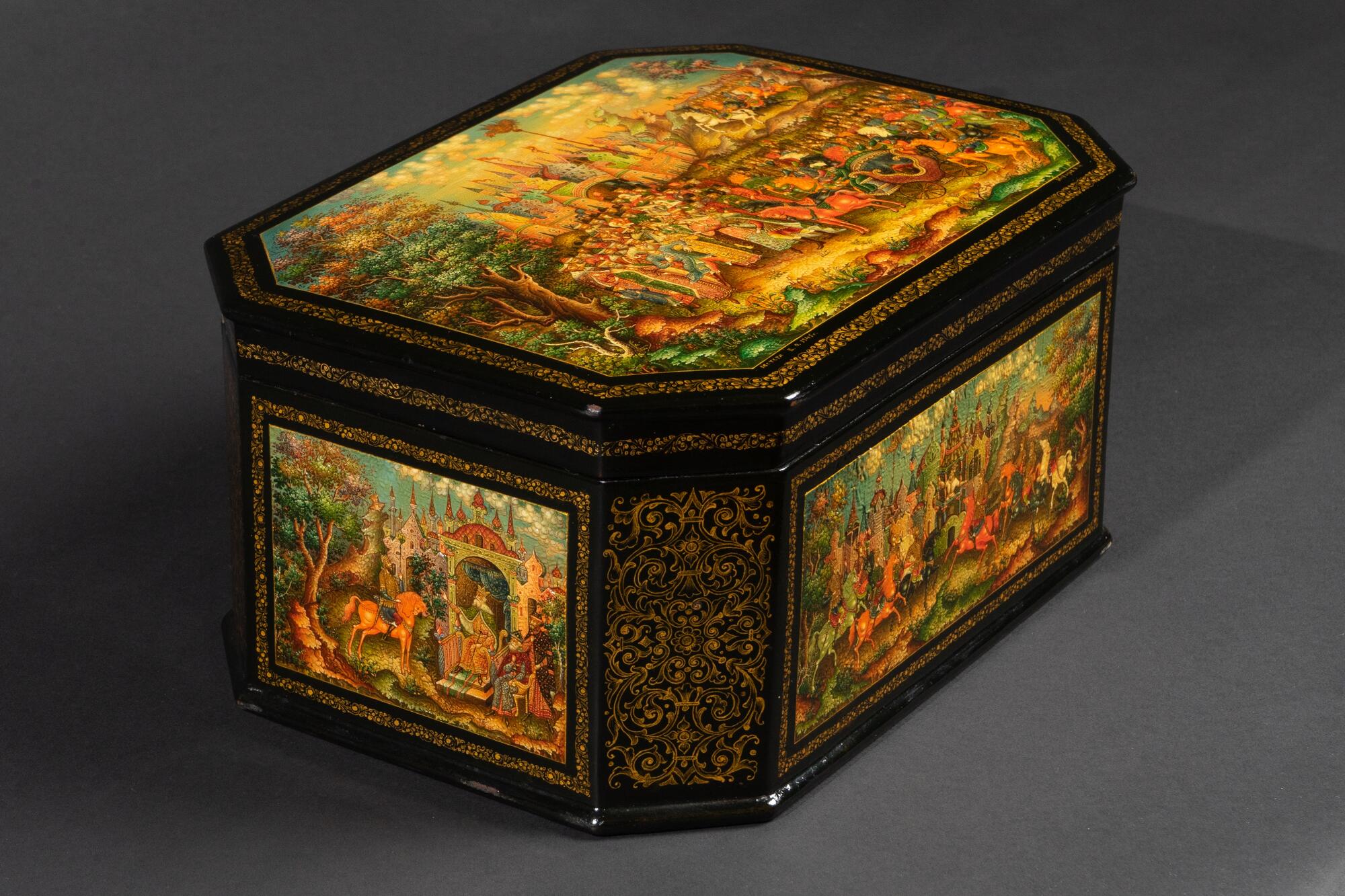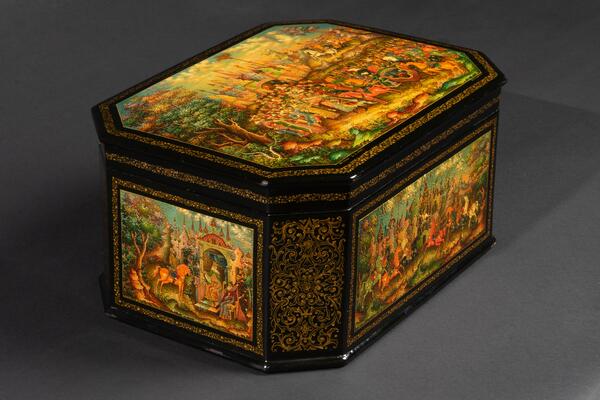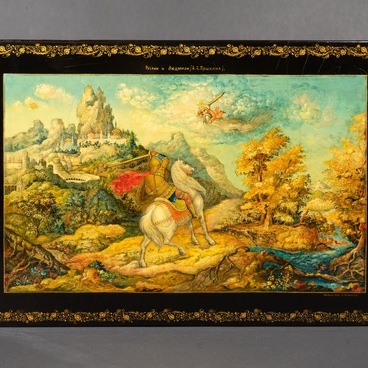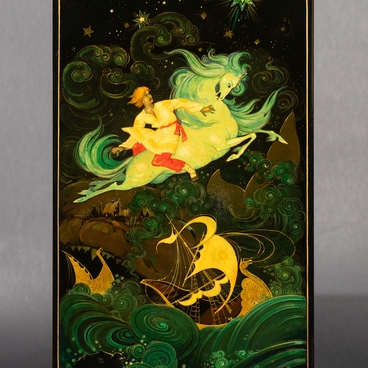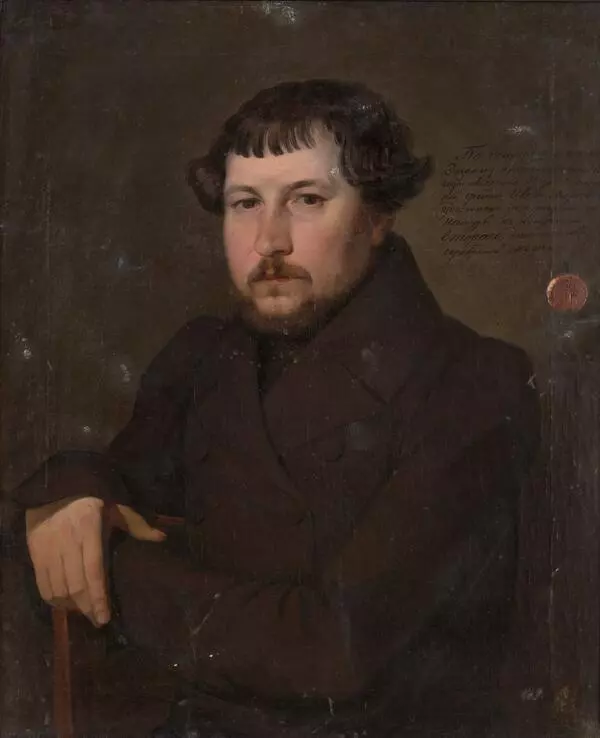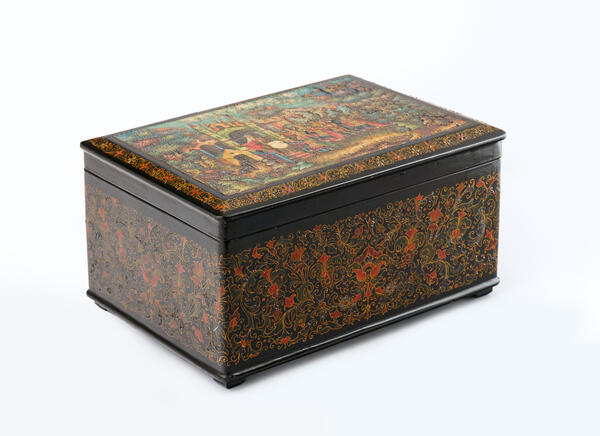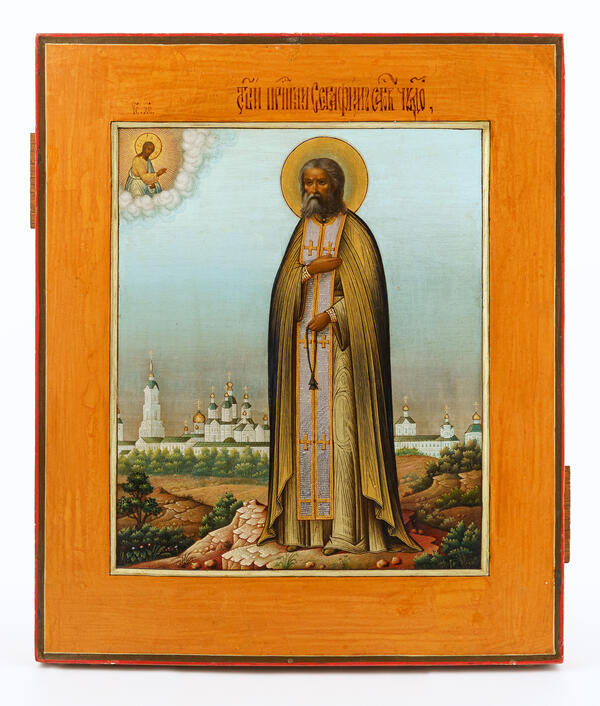Ivan Morozov is one of Mstyora’s old masters, who continued to preserve the traditions of Old Russian art in his works. The artist was born in a family of hereditary icon painters; for a long period of time, he created “stylized” icons (icons which imitated different iconographic styles). The master turned to miniatures on papier mâché items in the early 1930s, and his art career peaked in the 1940s and 1950s.
The artist loved to paint miniatures on fairy-tale and historical topics. Most often, he depicted folk life: festivities, round dances, fortune-telling on wreaths, fishing. Battle scenes occupy a special place in his creative legacy. It is important to note that in his miniatures dedicated to great battles, he managed to create sophisticated and dynamic compositions, which at the same time were simple, often almost symmetrical.
Ivan Morozov always made several copies of a finished miniature in order to record his artistic solutions, which he had devised with great difficulty. “It was difficult to paint an icon”, the artist said, “and it was ten times more difficult to create a miniature…”
In general, the artist’s style is characterized by conciseness, generalized forms, and elaborate decorative elements. The master often used the technique of rhythmic repetition of colorful spots on the surface: if one looks at his miniature from a distance, it resembles a multicolored carpet with a specific pattern, although in fact it has a carefully worked out plot and each character is distinguished by special traits.
In this miniature, the master turned to Pushkin’s “The Tale of the Golden Cockerel”. It is a fairy-tale about the cruel and defiant Tsar Dadon. Once a Wise Man gave him a cockerel that could predict dangers. The bird helped his soldiers to prepare for battles and win. In return for the bird, the Sorcerer asked the tsar to grant him his wish, but Dadon broke his promise and killed him. Then the cockerel flew up, sat on the ruler’s head and pecked him to death.
The master captured the meeting of the king and the people on the lid of the chest: a crowd of residents comes out of the gates of the fairy-tale city to greet the ruler. The background is a special feature of the composition: the numerous men of Dadon swiftly rush behind him. Thus, the artist used a technique typical for icon painting: he contrasted dynamic and static scenes.
The artist loved to paint miniatures on fairy-tale and historical topics. Most often, he depicted folk life: festivities, round dances, fortune-telling on wreaths, fishing. Battle scenes occupy a special place in his creative legacy. It is important to note that in his miniatures dedicated to great battles, he managed to create sophisticated and dynamic compositions, which at the same time were simple, often almost symmetrical.
Ivan Morozov always made several copies of a finished miniature in order to record his artistic solutions, which he had devised with great difficulty. “It was difficult to paint an icon”, the artist said, “and it was ten times more difficult to create a miniature…”
In general, the artist’s style is characterized by conciseness, generalized forms, and elaborate decorative elements. The master often used the technique of rhythmic repetition of colorful spots on the surface: if one looks at his miniature from a distance, it resembles a multicolored carpet with a specific pattern, although in fact it has a carefully worked out plot and each character is distinguished by special traits.
In this miniature, the master turned to Pushkin’s “The Tale of the Golden Cockerel”. It is a fairy-tale about the cruel and defiant Tsar Dadon. Once a Wise Man gave him a cockerel that could predict dangers. The bird helped his soldiers to prepare for battles and win. In return for the bird, the Sorcerer asked the tsar to grant him his wish, but Dadon broke his promise and killed him. Then the cockerel flew up, sat on the ruler’s head and pecked him to death.
The master captured the meeting of the king and the people on the lid of the chest: a crowd of residents comes out of the gates of the fairy-tale city to greet the ruler. The background is a special feature of the composition: the numerous men of Dadon swiftly rush behind him. Thus, the artist used a technique typical for icon painting: he contrasted dynamic and static scenes.
